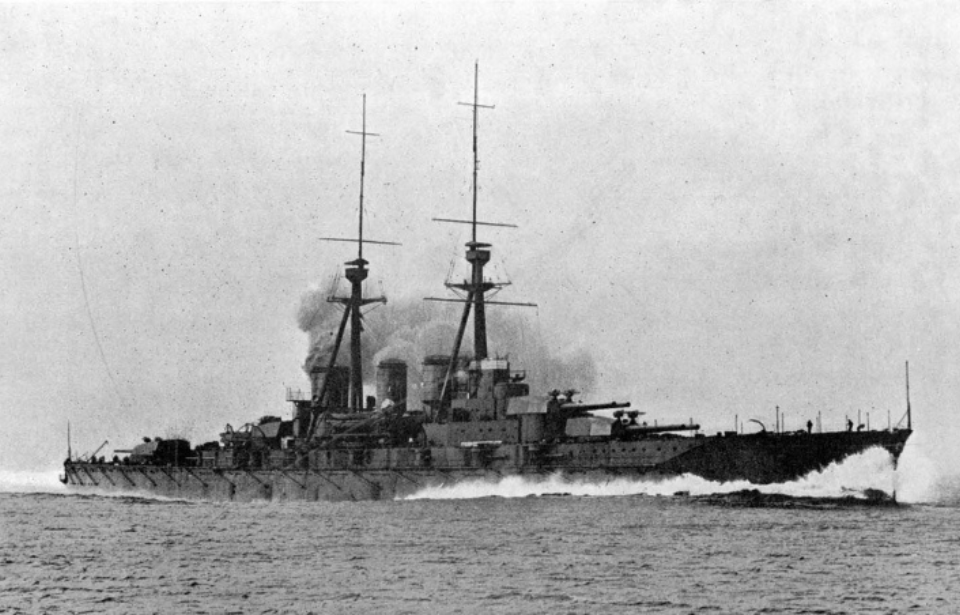The Japanese battleship Kongō received a lasting legacy and was bestowed with evocative nicknames, such as the “Indestructible Diamond,” “Indra’s Spear” and “Divine Thunder.” Beyond these formidable epithets, this venerable vessel played a crucial role in both World War I and II.
Construction of Kongō
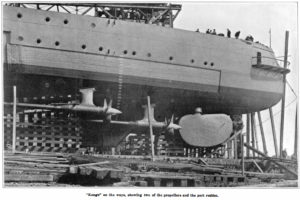
Commencing in January 1911 under the design of British naval engineer George Thurston, the construction of Kongō marked a distinctive chapter in the class. The vessel stood as both the inaugural and concluding battlecruiser to be built in the United Kingdom, with the shipyard in Barrow-in-Furness, Cumbria, England. The remaining trio of the class found their construction sites in Japan.
Regrettably, the construction process was marred by scandal. In January 1914, a leaked telegram brought to light a troubling revelation: Japanese officials had accepted kickbacks from both German and English armaments corporations, in exchange for using their products.
This revelation prompted the resignation of Prime Minister Yamamoto’s entire government and the departure of senior business executives. Furthermore, Japanese Vice Adm. Matsumoto Kazu faced a court-martial and received a three-year prison sentence for his involvement.
Kongō was loaded with armaments
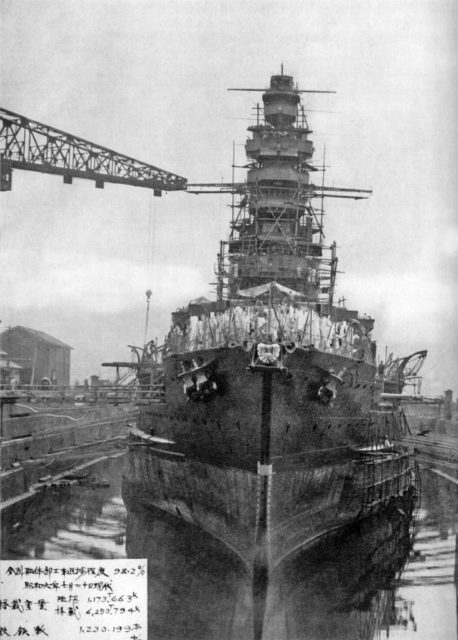
Kongō was equipped with eight 14-inch heavy-caliber main naval guns housed in four twin turrets. These advanced guns could launch both armor-piercing and high-explosive shells, and they were the world’s first 14-inch guns installed on a naval vessel. The Japanese military needed to maintain a perception of superior firepower, and Kongō‘s armaments ensured this advantage was frequently asserted.
Supplementing its primary arsenal, Kongō‘s secondary battery included 16 six-inch .50-caliber guns in single casemates, along with eight three-inch guns and an additional eight 21-inch submerged torpedo tubes.
Further enhancements were made in 1929 when the cruiser underwent her conversion into a battleship. By October 1944, the vessel’s secondary armament was comprised of eight six-inch guns, 122 Type 96 anti-aircraft rapid-fire cannons and eight five-inch guns.
Service during World War I
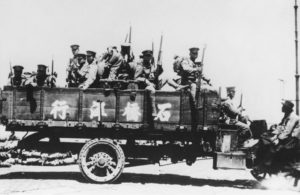
Formally commissioned in August 1913 as a battlecruiser, Kongō swiftly entered active service. At the onset of the First World War, she was deployed to patrol German lines of communication at sea and later provided support to Japanese units during the Siege of Tsingtao.
Following the British victory over Germany at the Battle of the Falkland Islands, Kongō‘s role diminished. Consequently, she was either stationed at Sasebo Naval Base or patrolled near China for the remainder of the conflict.
After WWI, a collective desire among the world’s powers to avert another conflict led to the signing of the Washington Naval Treaty. This imposed restrictions on the construction of new naval ships, resulting in the reduction of the size of the Japanese Navy.
Interwar period and the start of World War II
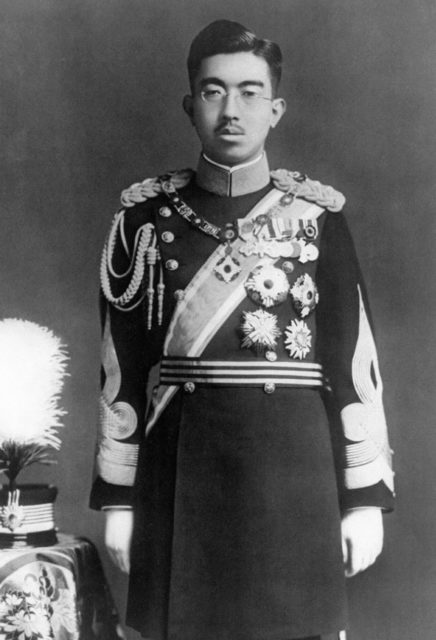
In 1923, Kongō was used to transport Crown Prince (later Emperor) Hirohito to an official visit of Taiwan, and over the interwar period saw a number of upgrades. Starting in 1929, the Japanese Empire began transforming Kongō from a cruiser to a full-on battleship, completing the process six years later. The vessel was made to be significantly faster and had the armor near her ammunition magazines strengthened, among a number of other upgrades.
The newly rebuilt ship was active during the Second Sino-Japanese War, with two of her floatplanes bombing the Chinese town of Fuzhou. When the Second World War began, however, Kongō was sent off to the Pacific.
On February 22, 1942, the battleship participated in the Japanese invasion of the Dutch East Indies. The rest of year saw Kongō frequently battling and sinking ships from the British Empire across the Pacific.
The loss of Kongō in the Formosa Strait
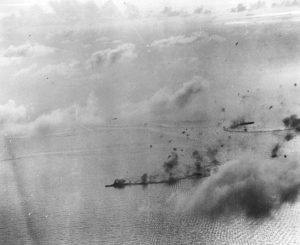
For Kongō and Japan, the start of the Pacific campaign went very well. However, the tides turned during the Battle of Midway with the loss of four of the Combined Fleet’s aircraft carriers. The ship also took part in the Guadalcanal Campaign, during which Henderson Field was bombarded with high-explosive shells in what was the most successful Japanese battleship action of the Second World War.
The next two major offensives the vessel took part in were the battles of the Philippine Sea and Leyte Gulf. Kongō played an important role in Leyte Gulf, sinking multiple American vessels, including the destroyer escort USS Samuel B. Roberts (DE-413). Despite this, the battle resulted in a victory for the Allies.
More from us: Only 10 Crewmen Survived the Sinking of the Japanese Battleship Fusō – Out of 1,600
Not long after, in November 1944, Kongō was spotted by the submarine USS Sealion (SS-315) in the Formosa Strait. The vessel fired six bow torpedoes at the battleship, two of which hit and flooded Kongō‘s boiler rooms. While she was able to escape the scene, the damage proved to be too much, with her sinking to the bottom of the strait after her forward 14-inch magazine exploded. Over 1,200 crewmen died.
Kongō was the only Japanese battleship to be sunk by a submarine during WWII, while Sealion was the only Allied submarine to sink an enemy battleship.
